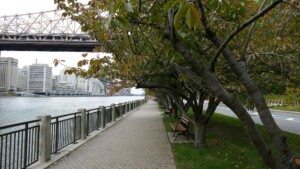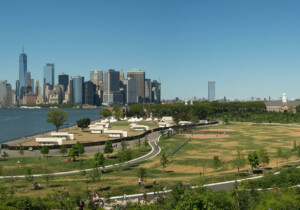What’s the coolest place in Los Angeles? It may be right over your head. Starting in 2014, thanks to an update of the Municipal Building Code, all new or refurbished buildings will be equipped with “cool roofs.” A cool roof is built of reflective rather than absorptive material. Compared to traditional roofs, cool roofs can be as much as 50 degrees cooler on the roof surface, and can lower interior building temperatures by several degrees. Los Angeles is the first major American city to pass a cool-roof ordinance.
The movement to cool Los Angeles’s roofs was sparked by a recent UCLA study, which indicated a local temperature rise of between 3.7 and 5.4 degrees by 2050. Over the same period, the number of “extreme heat” days (during which temperatures rise above 95 degrees Fahrenheit) is projected to triple in downtown Los Angeles, and quadruple in the San Fernando and San Gabriel valleys.
“We sort of looked at, well, what can we do locally to offset some of that warming,” David Fink, Director of Campaigns at advocacy organization Climate Resolve, said. “The obvious thing was to…alter much of our paved surface, and that really comes down to roofs and streets.”
Climate Resolve organized a one-day conference on cool roofs in March, at which time its members began working with the mayor’s office, the City Council, and the Department of Water and Power (LADWP). LADWP agreed to expand existing incentives to offset any cost increase associated with alternative roofing materials. The Los Angeles City Council passed the update of the Municipal Building Code on December 17.
Climate Resolve is working towards outfitting existing low-income apartment buildings with cool roofs. While the project is currently on hold, Fink explained, it remains a priority for the organization. “They can really be good models for other multi-family housing projects,” he said. In addition, “the folks who live in these developments can use those benefits more than just about anybody else.” Cool roofs, after all, have the potential not just to reduce greenhouse gas emissions, but also to prevent heat-related deaths.
In the meantime, Climate Resolve’s top goal for the new year is to turn the city’s attention to street level, and the benefits of non-absorptive paving. “There’s a huge opportunity there, and LA’s the perfect place for it, because of the climate, and how much paved surface there is,” Fink said. Compared to the cool-roof initiative, a “cool streets” ordinance may be harder to come by. “The city has traditionally been fairly intransigent in terms of using something new. They continue to do what they know, and what’s inexpensive—because they own these [asphalt] plants,” Fink said. Fink and his colleagues at Climate Resolve remain optimistic, however, especially since the Bureau of Street Services agreed to launch several pilot alternative-paving projects next spring. “We anticipate that LA, like [for] cool roofs, will be the first major city in the US to use cool paving,” Fink said.










